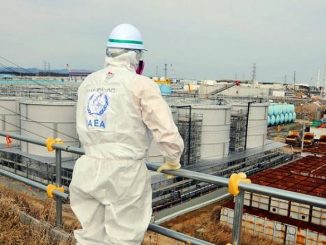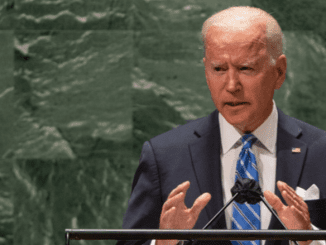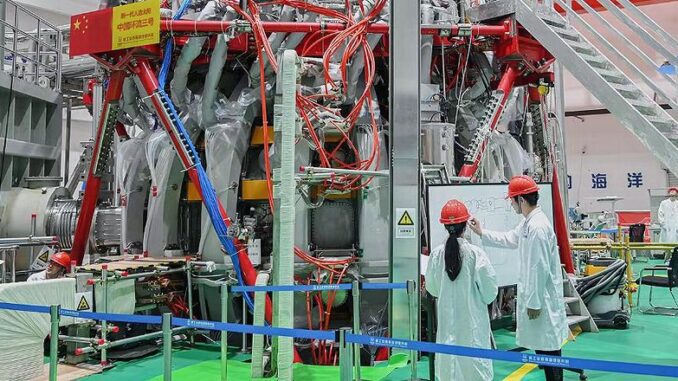
VIENNA, Austria, September 21, 2024 (ENS) – China is opening 12 nuclear research facilities and testing platforms to international scientists and institutions to enhance global nuclear cooperation, a senior Chinese official said in Vienna this week.
Liu Jing, vice chairman of the China Atomic Energy Authority, CAEA, announced the opening of these facilities to international researchers at a meeting organized by the CAEA on the sidelines of the International Atomic Energy Agency’s annual general conference, as China marks the 40th anniversary of its accession to the IAEA.
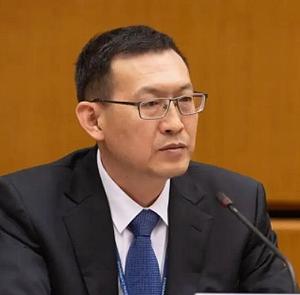
The 12 nuclear research facilities that will be opened to outsiders are in fields such as basic nuclear research, isotope production, nuclear environment simulation, and equipment testing, as well as high-level radioactive waste treatment and disposal.
They include the China Advanced Research Reactor at the China Institute of Atomic Energy in Beijing. This tank-in-pool reactor uses a heavy water reflector and light water as a coolant and moderator. The reactor’s main purpose is to provide a neutron source for research and to help solve problems in the nuclear, aerospace, aviation, energy, and transportation industries.
International scientists are also welcome in the city of Chengdu at China’s new-generation tokamak device Huanliu-3, HL-3. Called the “artificial sun” because it generates energy by nuclear fusion, the way the Sun does, this reactor was completed by the China National Nuclear Corp in 2020 and is now run by 17 collaborating labs and facilities around the world such as the French Alternative Energies and Atomic Energy Commission, as well as Japan’s Kyoto University.
The world’s dozens of active tokamak nuclear fusion experiments share ideas, scientists, and resources. This tokamak, like many others, contributes to International Thermonuclear Experimental Reactor, ITER, the world’s largest, now under construction in the south of France.
The Beishan Underground Research Laboratory is also on the list of nuclear facilities that China is opening to international scientists. Usually called the Beishan URL, this deep geological repository for the disposal of spent nuclear fuel is now under construction in the Gobi Desert, in Gansu, northwestern China.
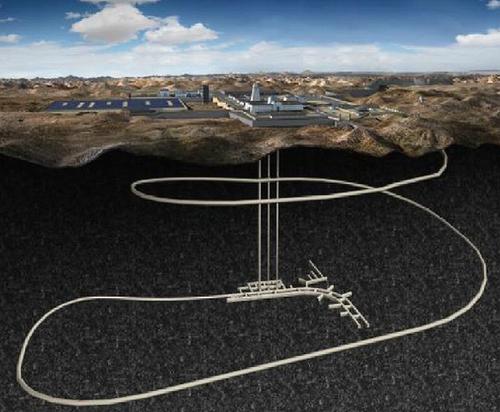
The facility is expected to take seven years to build, with a planned operating period of 50 years, and cost approximately 2.7 billion yuan (US$400 million). It will reach 560 meters (1,840 ft) below ground at its deepest point.
China has been working on identifying a suitable site for a high level nuclear waste repository since 1985, and since 1999 those efforts have been supported by the International Atomic Energy Agency.
“The safe disposal of high level radioactive waste is one of the critical missions for the sustainable development of China’s nuclear industry,” said Liang Chen, vice president of the Beijing Research Institute of Uranium Geology, which began constructing the underground research laboratory in 2021.
“The construction of an underground research laboratory is an opportunity for advancement in the science and engineering of geological disposal facilities and an essential component in a sustainable energy future for countries,” said Stefan Joerg Mayer, head of the Disposal Team at the IAEA. “Despite the constraints of the pandemic, we were able to design, organize and lead an innovative virtual mission to provide expert assistance to China in the construction of this new R&D facility.”
This week’s meeting, themed “Share for Development,” was organized by the CAEA to promote international cooperation in nuclear technology research and development,
Yu Jianfeng, chairman of China National Nuclear Corporation, said at the event in Vienna that the company aims to deepen cooperation with the IAEA and expand international collaboration. He expressed hope that opening China’s nuclear research facilities will contribute to advancing nuclear technology globally.
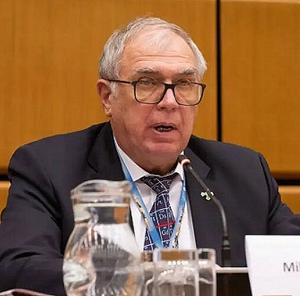
IAEA’s Deputy Director General Mikhail Chudakov commended China’s “remarkable achievements in nuclear energy development” and highlighted the long-standing, fruitful relationship between the IAEA and the CAEA.
Welcoming China’s decision to open up more of its nuclear research and development facilities, Chudakov said the move will further strengthen the IAEA’s technical capacity to support its member states.
On Monday evening, the CAEA and China’s permanent mission to the United Nations (UN) and other international organizations in Vienna jointly held a reception at the UN headquarters in Vienna to celebrate the 40th anniversary of China’s accession to the IAEA. More than 200 participants, including IAEA representatives and foreign envoys to Vienna, attended the event.
Li Song, China’s permanent representative to the UN and other international organizations in Vienna, said at the reception that China and the IAEA have expanded practical cooperation and jointly promoted the development of nuclear energy over the past 40 years.
China, he said, will continue to strengthen collaboration with the IAEA and its member states to address emerging challenges in international security, safeguard the global non-proliferation regime, and promote the use of nuclear energy and technology for the benefit of the Global South.
At the reception, Liu, Li and IAEA Director General Rafael Grossi jointly unveiled a bronze statue of Qian Sanqiang, a renowned Chinese nuclear physicist and one of the founders of China’s nuclear industry.
Featured image: China’s tokamak device Huanliu-3, called the “artificial sun” because it generates energy by nuclear fusion as the Sun does. 2024, Chengdu, China (Photo courtesy China National Nuclear Corporation)
© 2024, Environment News Service. All rights reserved. Content may be quoted only with proper attribution and a direct link to the original article. Full reproduction is prohibited.

